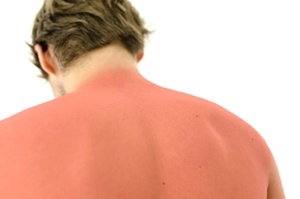As medical staffing professionals know, while a sunburn may seem like temporary irritation, it can cause long-term damage to the skin and speed up the aging process. The Skin Cancer Foundation found that 42 percent of people polled get a sunburn at least once a year. With summer around the corner, it's especially important to remind patients about sunscreen application to prevent damage.
Apply sunscreen year-round
One of the biggest myths about skin care is that you can't get burnt if the weather is cloudy. Even when it's overcast, the sun's ultraviolet (UV) rays can penetrate through the clouds and cause sunburn. Since the sun's reflective powers are great – 80 percent on snow and 17 percent on sand – patients need to make sunscreen application a habit, summer through winter. The UV average peaks in June and July, which is why most people get burnt while on vacation.
Dangers of sunburn
The skin reddening is caused by overexposure to the sun's UV rays. Children in particular are at risk, and according to SkinCancer.org, one blistering sunburn in childhood can double a person's risk of developing melanoma – the most serious form of skin cancer – later in life. Over time, the sun's UV light damages the fibers in the skin called elastin. When these fibers break down, the skin starts to sag, stretch and lose its ability to heal. Too much UV radiation from the sun or tanning beds can destroy DNA in your skin cells. If the damage accumulates over time, it can cause cells to start growing out of control, which may lead to skin cancer.
SPF
Dermatologists recommend using a sunscreen with a sun protection factor (SPF) of 15 or greater for all skin types. SPF refers to the product's ability to screen or block out the sun's harmful rays. For those who are fair-skinned and burn easily, they may want to select a sunscreen with a higher SPF to provide additional protection. While using a lotion, cream, spray or oil comes down to personal preference, tell your patients that most oils typically have a SPF of less than 2, which is an inadequate amount.
Also, be sure to put on more after swimming or working out, as sweat and other liquid removes your sunscreen. The products in gel form tend to sweat off more easily, so those should be reapplied more frequently. As a general rule, sunscreens should be applied daily if you will be in the sun for more than 20 minutes.
Picking the right ingredients
Travel nursing professionals may know that there is a distinction between sunscreens and sunblock. Sunscreens can be categorized into two major types: physical and chemical. Chemical sunscreens are made of special ingredients that serve as filters that reduce UV radiation penetration to the skin. These sunscreens are often colorless and pack UVB- and UVA-absorbing chemicals.
Physical sunscreens, on the other hand, are most often referred to as sunblocks and contain ingredients such as zinc oxide and titanium dioxide that physically block UV radiation. These provide protection against UVB and UVA light. Importantly, though, the amount of sun protection cannot be quantified in the same way as sunscreen SPFs, even if it is potentially high. Dermatologists and medical staffing professionals suggest that individuals who have unusual sensitivity to UV radiation should wear physical sunscreen.
Difference between "waterproof and "water-resistant"
You've seen the labels on the product that boast being "waterproof" and "water-resistant," but most people don't know there is a difference. The Federal Drug Administration considers a product waterproof if it maintains its SPF level following 80 minutes of exposure to water, whereas a product is considered water-resistant if it maintains its SPF level after 40 minutes of water exposure. How well the sunscreen stays on the skin after hopping in the pool, bathing or sweating could be just as important as SPF strength.

